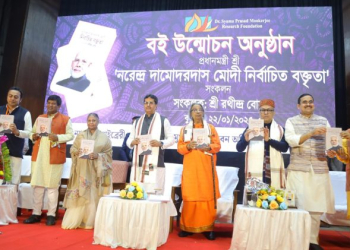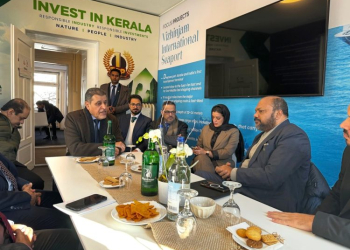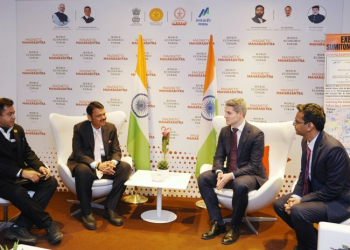New Delhi: India needs to remain India instead of following any other country for development, said Rashtriya Swayamsevak Sangh chief Sarsanghchalak Mohan Bhagwat on Monday.
“If we start following other nations like China, Russia, America, it will be an imitation. The nation can develop in its originality”, said Bhagwat. To achieve the long-term goal of development, it is necessary to take pride in the geography and history of India.
The RSS Chief was speaking at the launch of a book titled ‘Connecting with the Mahabharata’ here on Monday. While launching the book, he said that there have been efforts to make Indians forget their ‘itihaas’ (history) for their selfish motives.
“India’s history and civilization is extremely old, but for our colonialists it was necessary to make us believe that no culture in the world is older than theirs. They preached that our ancestors were fools and our holy literature is wrong, it was our folly to continue believing them”, he said.
Talking about climate change and the issue of zero emissions, he said that the world needs to learn from India’s scriptures and the centuries-long tradition. However, the world is now coming to that stage again, but it will take time, Bhagwat added.
While speaking about India’s two epics, the Mahabharata and the Ramayana, he said that we are told that these are just imagined stories and poetry. But it is important to understand that does any imagination last so long?
“It is now considered that Ramayana and Mahabharata are not historical texts, but just mahakavyas or epic poems. However, for a text to continue to be relevant and persistent in popular memory as Mahabharata and Ramayana are, there have to be facts in them. It is considered that history has no use. The ‘itihaas’ in these epics has been narrated like a story, not for entertainment or information, but so it continues to be told and people continue taking lessons from history to better their present and future,” the RSS Chief said.
The book ‘Connecting with the Mahabharata’ has been authored by research scholar Neera Misra and Air Vice Marshal (Retd.) Rajesh Lal, son of Indian archaeologist Prof BB Lal.
The book is dedicated to the late Prof BB Lal whose first set of excavations was at Hastinapur followed by Indraprastha in 1952-53, when he went on a journey to discover the historicity of the Mahabharata.
The book is divided into eight sections, where the authors introduce the storyline and contents of the 18 parvas, connecting them to the vast geospatial landscape covered in the narrative. The book highlights the significant Mahabharata locations excavated by prominent archaeologists.
(IANS)



















